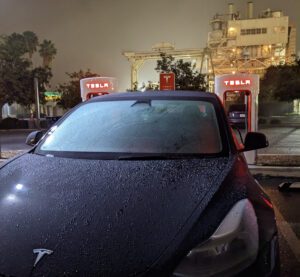As the demand for Electric Vehicles grows, so does the need for a reliable and efficient charging infrastructure. Electric vehicle charging stations play a crucial role in promoting the widespread adoption of EVs by ensuring convenient and accessible charging options for owners. This is a short overview of electric vehicle charging stations.
Design components of EV Charging station
The physical layout of a charging station includes the positioning of charging points, parking spaces, and signage. The design of the charging station unit itself involves selecting appropriate materials, dimensions, and enclosures to protect the charging equipment from weather conditions and potential vandalism. It must be durable and able to withstand different environmental factors. Proper cable management is crucial to ensure safety and convenience. Charging stations have designated cable storage or holders to keep the charging cable neat and organized when not in use. EV charging stations incorporate safety features such as ground fault circuit interrupters (GFCIs) and surge protection to protect the EV and the user from electrical faults or power surges. Adequate insulation, grounding, and protection against overheating are also critical to ensure user safety.
Advanced charging stations have designs to integrate with energy management systems, allowing for load balancing, demand-response programs, and smart grid integration. This enables optimized energy usage and efficient charging operations. The user interface of an EV charging station is user-friendly. It includes a touchscreen or buttons to initiate the charging process. Also, it displays the charging status, and provides instructions. The design should allow for easy installation of additional charging points or the ability to upgrade charging speeds as technology advances. Designing charging stations with future expansion in mind is crucial to accommodate the increasing demand for EV charging.
Electric Charges on Methane Mitigation
Caulking shouldn’t be an issue for the Conduit Seal Alternative. Details of the panel and each charger station would be required to prepare the final design features. Generally, this mainly depends on whether the charger would be considered an “electric enclosure.” No additional methane barrier is required if an above-ground electric enclosure is installed with a solid metal base because the metal plate acts as a Vapor Barrier. If the enclosure does not have a metal base, the professional engineer on record will likely need a methane barrier installed on the concrete foundation.
Additionally, Methane Vapor Mitigation Conduit Seals installed at each electric conduit must be installed to ensure gas does not migrate through conduits. The subject matter is considered a great area amongst most building codes, so a professional engineer and Plan checker will have the ultimate jurisdiction over the requirements.
Three EV charging station types
The 3 types are Level 1, Level 2, and Level 3 (DC fast charging). Each class offers different charging speeds and requires specific infrastructure and equipment. Level 1 charging involves plugging the EV into a standard household electrical outlet (120 volts). This charging method is the slowest, delivering around 2-5 miles of range per hour. Level 1 charging is best for overnight charging or emergency top-ups.
Level 2 charging utilizes a 240-volt power source, like large home appliances like electric dryers. With a Level 2 charger, EV owners can achieve charging speeds of up to 25 miles of range per hour. Level 2 charging stations are common in residential areas, workplaces, and public spaces. Level 3 charging, also known as DC fast charging, is the quickest charging option for electric vehicles. These stations use direct current (DC) to rapidly charge the vehicle’s battery, delivering up to 80% charge in as little as 30 minutes. Level 3 charging stations are typically located along highways, enabling long-distance travel.
Charging Station Components
Electric vehicle charging stations consist of several key components. Firstly, the charging cable, which connects the charging station to the EV, allowing electrical power transfer. Secondly, the charging port, where the EV owner plugs in the charging cable to initiate the charging process. Charging ports are typically located on the front or sides of the vehicle. Thirdly, the charging station Unit. The charging station unit houses the power electronics and communication systems necessary for charging the car. It monitors the charging process, manages power flow, and ensures safety. Lastly, the payment system. Many public charging stations require a system for users to pay for the charging service. This can range from credit card readers to mobile payment apps or RFID cards.
Electric vehicle charging stations are an integral part of the growing EV ecosystem. By offering different charging speeds and accessibility options, these stations accommodate the various needs of electric vehicle owners. As electric vehicle technology advances, the charging infrastructure will play a vital role in supporting the widespread adoption of EVs and reducing reliance on fossil fuels. Due to ongoing advancements in charging technology, the future of electric vehicle charging stations is promising, providing easy and reliable charging solutions for EV owners.
